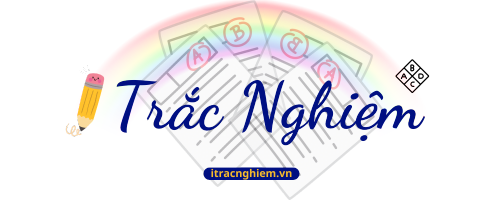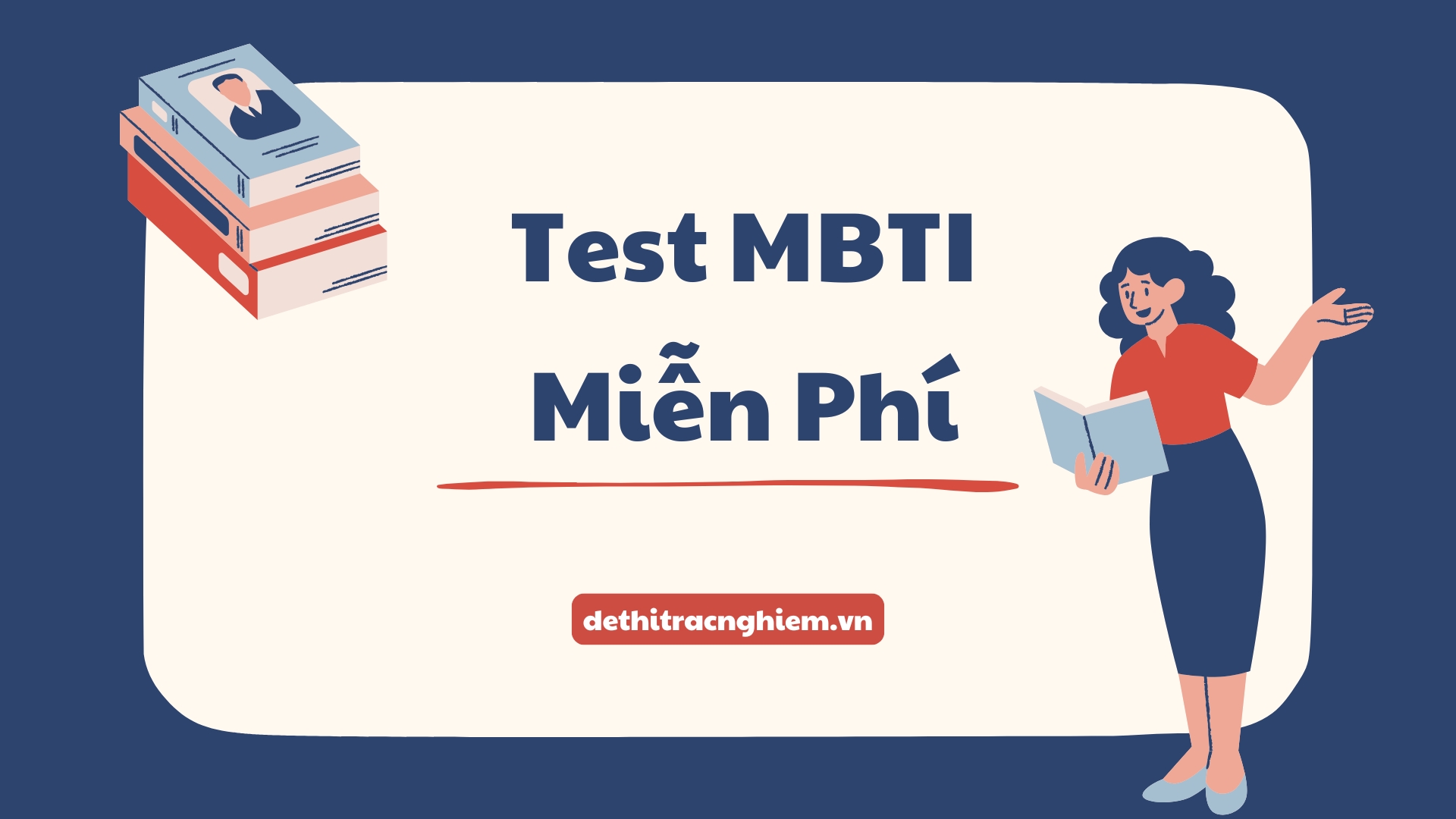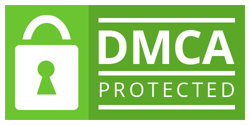Trắc Nghiệm Quản Trị Chiến Lược Tiếng Anh là đề ôn tập chuyên sâu thuộc học phần Quản trị Chiến lược, một môn học chuyên ngành cốt lõi được giảng dạy hoàn toàn bằng tiếng Anh trong chương trình đào tạo ngành Kinh doanh Quốc tế và Quản trị tại Trường Đại học RMIT Việt Nam. Đề thi được biên soạn bởi Dr. Peter Nguyen, Senior Lecturer, School of Business & Management – RMIT, cập nhật theo giáo trình quốc tế năm 2024. Nội dung tài liệu trắc nghiệm đại học này bao quát các nguyên lý cơ bản của Strategic Management, từ phân tích môi trường vĩ mô (PESTEL) và ngành (Porter’s Five Forces), đánh giá năng lực nội bộ (VRIO), đến các chiến lược cạnh tranh, chiến lược cấp công ty, và quy trình triển khai, kiểm soát chiến lược trong bối cảnh toàn cầu.
Đề Trắc nghiệm Quản trị Chiến lược trên dethitracnghiem.vn là công cụ hỗ trợ ôn tập hiệu quả cho sinh viên RMIT và các trường đại học quốc tế khác tại Việt Nam. Giao diện được thiết kế chuyên nghiệp, các câu hỏi được phân loại chi tiết theo từng chủ đề—từ terminologies (thuật ngữ) cơ bản đến các tình huống phân tích phức tạp bằng tiếng Anh—kèm theo đáp án và giải thích cặn kẽ. Người dùng có thể làm bài không giới hạn số lần, giúp củng cố kiến thức Strategic Management và nâng cao kỹ năng sử dụng ngôn ngữ chuyên ngành. Nhờ đó, sinh viên dễ dàng đánh giá điểm mạnh, điểm yếu và tự tin hơn khi đối mặt với các dạng bài tập và lý thuyết của môn Strategic Management trong kỳ thi.
Trắc nghiệm Quản trị chiến lược tiếng Anh
Question 1: Strategic management is the art and science of:
A. The analysis of financial statements to maximize profits in the short term.
B. The basic management functions like planning, organizing, and controlling resources.
C. The formulation, implementation, and evaluation of only marketing choices.
D. The formulation, implementation, and evaluation of key cross-functional decisions.
Question 2: The three main stages of the strategic management process are:
A. The simple process of analysis, followed by action and then adjustment.
B. The traditional management stages of planning, organizing, and controlling tasks.
C. Strategy formulation, followed by implementation, and finally strategy evaluation.
D. Mission development, setting objectives, and then allocating company resources.
Question 3: A SWOT analysis is used to analyze:
A. Both internal strengths/weaknesses and external opportunities/threats.
B. Only the external opportunities and threats facing the organization.
C. Only the internal strengths and weaknesses found within the organization.
D. An organization’s various business units using the specific BCG matrix tool.
Question 4: An organization’s “Vision” statement should answer which fundamental question?
A. The question, “What are our financial goals?” which defines objectives.
B. The question, “What do we want to become?” which defines the long-term vision.
C. The question, “What is our current business?” which defines the mission.
D. The question, “What are our core values?” which defines company principles.
Question 5: A PESTEL analysis is a framework used to analyze which environment?
A. The broad macro-environment, including political and economic forces.
B. The specific industry or micro-environment where the firm competes.
C. The internal environment, consisting of the firm’s resources and capabilities.
D. The competitive environment, focusing solely on the actions of direct rivals.
Question 6: Which of the following is NOT one of Porter’s Five Forces?
A. The bargaining power held by the suppliers of raw materials.
B. The intensity of rivalry among the existing industry competitors.
C. The specific role of government regulations and policies in the industry.
D. The potential threat posed by new companies entering the industry.
Question 7: In the VRIO framework for analyzing internal resources, the “I” stands for:
A. Whether the resource is “Integrated” with other company processes.
B. Whether the resource is considered “Important” to the firm’s success.
C. Whether the resource is “Intangible” rather than a physical asset.
D. Whether the resource is “Inimitable” or costly for rivals to imitate.
Question 8: In Porter’s Value Chain model, which of the following is considered a “support” activity, not a “primary” activity?
A. The primary activity of Inbound Logistics, such as receiving materials.
B. The support activity of Human Resource Management, such as hiring.
C. The primary activity of Operations, such as the manufacturing process.
D. The primary activity of Marketing and Sales, such as advertising.
Question 9: A “cost leadership” strategy focuses on:
A. Offering a unique product or service valued by many customers.
B. Focusing on the specific needs of a narrow market segment.
C. Acquiring direct competitors in order to increase total market share.
D. Producing standardized products at a very low per-unit cost.
Question 10: A “differentiation” strategy is aimed at:
A. Creating products or services that are seen as unique and valuable.
B. Reducing overall production costs to offer the market’s lowest price.
C. Targeting the unique needs of a very specific or niche market segment.
D. Integrating operations forward with distributors or backward with suppliers.
Question 11: A company that fails to establish a competitive advantage through either cost leadership, differentiation, or focus is said to be:
A. Considered a market leader due to its dominant position in the industry.
B. Operating “in a blue ocean” of uncontested and new market space.
C. Described as being “stuck in the middle” with no clear competitive advantage.
D. Being “horizontally integrated” by acquiring its direct industry rivals.
Question 12: Business-level strategy answers the question:
A. The corporate-level question of “What businesses should we be in?”.
B. The question of “How should we compete in our chosen business?”.
C. The functional-level question of supporting the business strategy.
D. The visionary question of “What is our long-term aspiration?”.
Question 13: The primary goal of a “related diversification” strategy is to:
A. Leveraging core competencies to achieve synergy between business units.
B. Entering a completely new and unrelated industry to spread overall risk.
C. Focusing all company resources on a single product or a single market.
D. Defending the company against the immediate threat of a hostile takeover.
Question 14: Backward integration is a strategy of:
A. Gaining ownership or increased control over its distributors or retailers.
B. Gaining ownership or increased control over the firm’s primary suppliers.
C. Gaining increased control over the firm’s direct industry competitors.
D. Developing new products to be sold in the firm’s existing markets.
Question 15: In the BCG Matrix, a business unit with a high market share in a high-growth industry is called a:
A. A “Cash Cow,” with high market share in a low-growth industry.
B. A “Dog,” with low market share in a low-growth industry.
C. A “Question Mark,” with low market share in a high-growth industry.
D. A “Star,” with high market share in a high-growth industry.
Question 16: For a “Cash Cow” business unit, the most appropriate strategy is generally to:
A. “Milking” the unit for cash to fund other, more promising business ventures.
B. Investing heavily in the unit to further increase its market share and growth.
C. Divesting or liquidating the business unit because of its weak position.
D. Pursuing a horizontal integration strategy by buying its main competitors.
Question 17: Which stage of the strategic management process is often considered the most difficult?
A. The strategy formulation stage, which is primarily an intellectual process.
B. The environmental scanning stage, which involves gathering external data.
C. The strategy implementation stage, which requires action and discipline.
D. The strategy evaluation stage, which involves reviewing various outcomes.
Question 18: The principle “Structure follows strategy” suggests that:
A. A company should always choose a strategy that perfectly fits its current structure.
B. The firm’s structure and its strategy are completely independent of each other.
C. The firm’s organizational structure is always more important than its strategy.
D. Organizational structure must be adapted to effectively support the chosen strategy.
Question 19: An organization’s culture is:
A. The shared values and beliefs that can be a major strength or weakness.
B. The formal set of rules and regulations that govern employee behavior.
C. The hierarchical structure of the company’s top management team.
D. The company’s officially written and published code of ethics document.
Question 20: The Balanced Scorecard (BSC) is a strategic evaluation tool that measures performance from which four perspectives?
A. The perspectives of Finance, Marketing, Operations, and Human Resources.
B. The perspectives of Financial, Customer, Internal Processes, and Learning.
C. The perspectives of Shareholders, Managers, Employees, and Customers.
D. The perspectives of Strengths, Weaknesses, Opportunities, and Threats.
Question 21: A “joint venture” is a popular strategy that occurs when:
A. When one company completely acquires another company in a transaction.
B. When a company sells off a division or a part of its business.
C. When two or more firms form a separate legal entity for a specific goal.
D. When a company decides to enter a new market entirely on its own.
Question 22: Which of the following is a defensive strategy?
A. Market Penetration, an intensive strategy to increase market share.
B. Divestiture, a defensive strategy involving selling a division.
C. Product Development, an intensive strategy involving new products.
D. Forward Integration, an integration strategy involving distributors.
Question 23: The “agency problem” in corporate governance refers to the potential conflict of interest between:
A. Conflicts between different functional departments within the same company.
B. The potential conflict of interest between the company and its suppliers.
C. The potential conflict of interest between the company and its customers.
D. The potential conflict between shareholders (principals) and managers (agents).
Question 24: What is the primary role of a company’s Board of Directors?
A. Developing and implementing the firm’s various marketing campaigns.
B. Managing the firm’s various day-to-day operational activities.
C. Negotiating contracts and agreements with the firm’s labor unions.
D. Monitoring and overseeing top management on behalf of shareholders.
Question 25: A “blue ocean strategy” involves:
A. Creating a new, uncontested market space to make competition irrelevant.
B. Competing head-to-head with rivals in a crowded, existing market space.
C. Acquiring direct competitors in order to dominate an existing market.
D. Focusing on a low-cost strategy in a highly competitive, crowded market.
Question 26: The main purpose of establishing annual objectives is to:
A. To fulfill the company’s various legal and regulatory reporting requirements.
B. To define the company’s broad and inspiring vision for the next decade.
C. To complete the analysis of the company’s external business environment.
D. To serve as a basis for resource allocation and for monitoring progress.
Question 27: A transnational strategy is most appropriate when:
A. When pressures for cost reduction are low but local responsiveness is high.
B. When pressures for both cost reduction and local responsiveness are high.
C. When pressures for cost reduction are high but local responsiveness is low.
D. When pressures for both cost reduction and local responsiveness are low.
Question 28: A company’s “core competencies” are its:
A. Primary tangible assets, such as its plants, property, and equipment.
B. Formal organizational structure and official reporting relationships.
C. Unique resources and capabilities that act as a source of competitive advantage.
D. Most profitable products and services that are currently on the market.
Question 29: When a company buys one of its direct competitors, it is an example of:
A. Horizontal Integration, which involves gaining control over competitors.
B. Backward Integration, which involves gaining control over suppliers.
C. Forward Integration, which involves gaining control over distributors.
D. Unrelated Diversification, which involves entering a completely new industry.
Question 30: The ultimate goal of strategic management is to:
A. To maximize the company’s profits in the immediate short term.
B. To achieve and then maintain a sustainable competitive advantage.
C. To continually increase the overall size and scale of the company.
D. To simply write a comprehensive and detailed strategic plan document.




